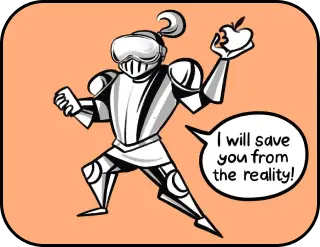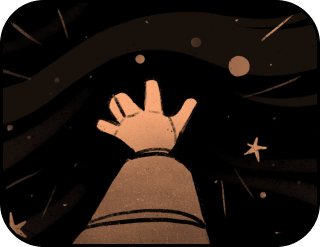Category: Cognitive technologies
Animal branding and the 4D theory
“People don’t know what they want until they are offered it”
Frédéric Beigbeder
Again, I am squeezing through these artificial jungles, where dense, bushy thickets sting more dangerously than local insects, and every fierce predator skillfully imitates the behavior of a hunter: “Take everything from life,” “Your strength is in our eggs,” “Delight plays big,” “Don’t waste time—waste years.”
My T-shirt, soaked with the smells of decomposing leaves and exotic plants, becomes damp from the temperature difference between key indicators, and dust of foreign meanings settles on my face. Where am I running to and what do I expect to meet?
Somewhere from above, a hairy spider slides onto my face and shouts directly into my pupil: “You are more than just you!” What does this all mean? With a targeted movement, I knock out the fly-eater and immediately notice a hissing snake. “Open the third kidney. New water from the depths of your Self,” whispers the cobra unctuously, searching for a comfortable spot near my neck. Not this time, dear—go to hell! A flock of promo-monkeys runs past, those who scan travelers with magnifying eyes: blink—and they’ll offer a 40% discount on new furniture. Constantly heard is a prolonged roar—a lion suffers like that. Or a founder who didn’t close a funding round.
I take a step and immediately stumble. How loose the soil is here!
I feel nauseous. That’s alright; everyone here feels that way. Resting is forbidden; loud thinking is also prohibited—termites will instantly snatch you away. And where do they come from? “Taste balance from the jar,” “Accept the terms of the offer and relax,” “Our AI-powered nose wipe is ready for your mucus,” “Capture yourself on video to the last breath,”
“We don’t know what you need, but we always have it in stock.” Marauders. Jackals. Rippers.
I don’t know those who managed to get out of this place unscathed, but I’ve firmly decided to be the first one. Tremble, label jungles! Because I intend to become that very grain of sand capable of stopping this deadly mechanism!
Function, belonging, faith, identity.
Instinct, imitation, ideal, illusion.
Brand, brand, brand, chaos.
A formula that will not let me go crazy in the harsh realities of competing brands. First it turns me into an animal, then it gives me an antidote. “Where there is pain—there is a brand,” they trained us on accelerators, forgetting to decode the full meaning of the word “pain.”
So are you ready, marketing aspids? Put further away those carefully formulated “unique selling propositions,” which will be of little use on this journey.
We are entering the zone of animal brands—4D. And may God help us.
Sector 0: The Archaeological Zone of Branding
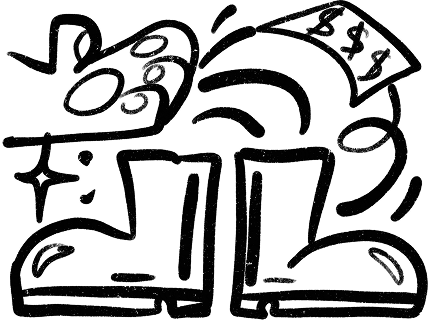
Here’s where you are to get amazed according to the plan, dear researcher of marketing depths. The thing is that there were no brands before—people simply lived; they occasionally provided services and made things: they baked bread, mended nets, and brewed soap. No one talked about “brand values” or “the mission of a shoemaker.” No one bought “meaning”—everyone bought shoes.
If the product was crap—it was crap; and you were crap too. Straightforward and without slides.
A brand appeared when products ceased to be unique: when there was too much soap, when they started to sew comfortable dresses everywhere, when bread was baked by everyone who learned to grind grains between stones—when it became impossible to distinguish “the best” from “average.”
Then someone in greased boots stood on a table, cleared his throat loudly and shouted at full volume: “MINE IS BETTER BECAUSE IT’S MINE!” That’s how the first beast appeared.
At first it was domestic and fluffy and it modestly hid in hand-drawn signs: “Martin’s Soap,” “Simon the Hairdresser,” “All sorts of goods, good calico, nice and cheap!” Then this little beast started creeping into TV screens, newspapers—and into people’s minds. The number of goods increased accordingly—and so did the beasts who aimed at showing their uniqueness. And they needed to be fed.
Thus we moved from product to projections; from taste—to slogans, from quality—to belonging; from “soap”—to “it suits me.” You no longer buy just a product; you buy an animal that promises you memories of childhood instead of chocolate.
They started breeding such animals artificially—and to justify their existence they invented a special word: “branding”.
Branding is when you add an invisible spice to quite edible food—and then charge three times more for it.
Branding is when soap suddenly becomes a personal philosophy, and milk becomes an act of self-identification.
Branding is when a product wears a suit of meaning and starts giving interviews to itself.
Simply put: ordinary rubber boots will remain standing by the wall—they have as much value as intrigue in a sixth-season series. But apply branding to them—and their fate immediately begins playing with reassuring colors:
— “These boots are about freedom”
— “About rebellion against the system”
— “About who you want to be in your ex-girlfriend’s eyes”
— “About how Norway smells in October”
Look—your neighbor already jumps for joy asking for these wellies so he can test drive them. There are many buyers now; and he was the first to like those rubber boots.
The trick is that rubber boots remain rubber boots—they haven’t changed at all.
The Survival Path and the Loop of Function
I am in the swamp on the very lowest tier of the branding jungle. I feel how the squelching mud persistently pulls me down to the bottom. I reek of an unfinished website and lost leads. Here, brands don’t create strategies; they seek sustenance—us, you and me.
Aristocratic brands won’t last on this level even for a few minutes; they will be immediately devoured by malicious insects.
The survival stage doesn’t start with meaning; it begins with animal panic: YOU MUST BE FIRST.
Are you hungry?—We are pizza.
Are you a loser?—We are a coach.
Are you being stupid?—We are a neural network.
Are you empty?—We will fill you up.
Hip-hip, fucking, hooray!
If a brand has no answer to hunger, it becomes dust on the altar of competition. If a brand can satisfy you, it becomes a function—a noose around the market’s neck: the tighter it’s pulled, the less chance there is to escape.
Ant-like brands don’t ask questions; they just exist. They turn into living functions with legs because they know that consumers aren’t looking for meaning. To fall down—to get up. To find—to bring. To die—to die. They know that your only power lies in your credit card. They don’t give you freedom of choice; their goal is to quench your thirst before you even realize what you want to drink. Such brands aim to reduce all your unmotivated actions to one highly motivated act—the act of buying.
And in this swamp, function is desperately needed! It’s like a first aid kit: you don’t think about it until your finger gets cut off. That’s why function must always go hand in hand with the product you’ve invented. The absence of a function makes you a toothless lion who, for some reason, has glasses on: maybe someone will admire and pet it, but you will be eaten first.
In the jungle, originality isn’t valued. In the jungle, what works is valued.
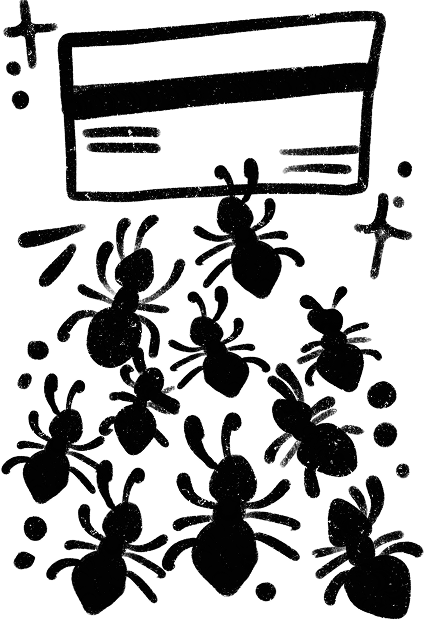
The Ritual of Shedding
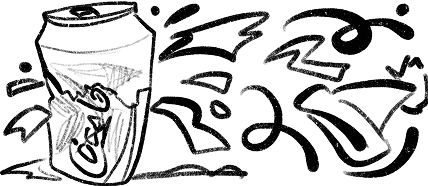
Remove the Coca-Cola logo, its color, bottle shape, and Santa Claus—and what remains is an empty brown soda. Try selling it without a name, myth, or “feel the taste.”
Can you? Neither can I.
The Herd Code of Branding
It seems I’ve escaped. Apparently, the swamp has well-trodden my bones. In the jungles polished by advertisers, you mustn’t stay still—especially on the first level. Piranha brands wait for your moment of weakness to attack stealthily and turn conscious flesh of choice into unconscious flesh of impulse. Chameleon brands will paint their skin to match your latest Google search: today they’re green eco-warriors; tomorrow they’re rebels in black leather; the day after tomorrow they’re neural network geeks generating pixel dinosaurs. Jellyfish brands will instantly subscribe you to everything that is “recommended for you.” Firefly brands will make you believe their illumination shines only for you, and years will pass before you realize their magic only works at a distance of a credit limit. Someone great once said that between the verbs “to consume” and “to exterminate,” there isn’t really much difference.
Just as I was about to move on, memory kindly brought me back to my early advertising course: Aristotle in his treatise Politics argued that an isolated person cannot be complete. Charles Darwin in On the Origin of Species demonstrated evolutionary advantages of herd behavior through natural selection. The discovery of Rizzolatti’s mirror neurons explained the biological basis of imitation. Solomon Asch’s experiments proved that 75% of people are willing to deny obvious facts just not to fall out of “the herd.” Quite a thing.
Humans are social creatures. In Lacoste jungles, this feeling is especially sharp. On the second level of successful branding strategy, people don’t buy—they choose sides. That’s why brand strategists invented the social norm that it’s forbidden to appear naked on the street. If your branded T-shirt doesn’t flaunt a logo, your phone case doesn’t highlight an easily recognizable apple relief, and your car trunk doesn’t have a short word engraved in silver letters—your herd won’t accept you because it can’t identify you. By the way, who do you support: Apple or Android?
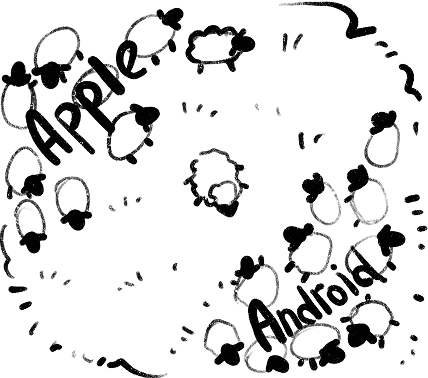
On this second social level, a brand becomes your herd’s business card. You go to Starbucks not just for coffee but so others understand: you have 300 rubles and ambitions. You won’t even think about enjoying a Tesla just because it has an electric motor. You can even be silent while driving along a dusty highway, Tesla will say everything about you itself: “I am among those who understood the future!”
Every logo is a password, a special mark, a tribal brand stamp. A secret code that opens doors into collective rhythm where one can be understood and heard. A paw print on soft ground left for those who know the trail.
Adidas—you’re one who runs in parks.
Nike—you’re one who runs over heads.
Patagonia—you support the Earth.
Moncler—you support style.
Brands carefully draw invisible borders—territory maps—they lure you into their prides because they know: any function becomes outdated but the herd remains. You may find something similar cheaper but not another identity. Finally take off that branded hoodie! Can you?
And now you’re no longer alone—you are a pride, a force—and together with those who wear similar signs, ready to fight for their place under the sun.
The Ritual of Marking

Step closer, seekers of truth! Can you hear that chilling laughter? The queen of social hierarchy stands in froont of you—a spotted hyena. Its function is to find exhausted animals by scenting their bodies. The hyena constantly laughs because otherwise it would cease being a hyena. Laughter is her identification tool, a badge on her forehead, a pass into her brotherhood of similar creatures. A hyena without laughter is just an anonymous cat; without its pack—a simply wandering carrion-eater.
Now look at your fellow tribe members with white inserts in their ears—see how awkwardly they nod along with imaginary music? AirPods have stopped being headphones—they’ve become social fangs: sure, you can buy similar ones much cheaper—but without Apple logo they’re just ordinary plastic pieces with speakers; without original AirPods you’ll be immediately kicked out from clubs that love buying dubious gadgets labeled Pro—like a hyena without laughter would be expelled from predator brotherhoods.
Quickly to the next point!
The call of the jungle—shaman brands
Where am I? The restrained tones of second-level branding have been replaced by noisy patterns of unnatural beauty here. Too bright lights, too compressed air and an ominous harmony prevail here. Figures in white robes stand symmetrically—they raise their hands skyward and perform some ritual while swaying slowly; smart bracelets glisten on their wrists as vows of constant synchronization; heads are adorned with VisionPro ready at any moment to shut out reality entirely. In its center stands an altar made from an old Power Mac G4 with dim light from a still-operating first MacBook in standby mode; amidst wild coyote howls someone whispers commandments.
We swear to:
— Never enter green messenger.
— Never open folders—Spotlight is our way.
— Always stay within the ecosystem: Mac, Watch, iPad, iCloud—and let Vision Pro come to us.
— Believe that minimalism isn’t design but spiritual state.
— Believe that “Designed in California” means “with love.”

Have you ever heard anything like that? Somewhere inside there’s that familiar feeling—the trap—it arises when clicking “Accept terms” without reading them at all. How sweet these words sound:
— We are interface monks.
— We say: Command-C.
— Our sermons are September presentations.
— Our prophets are Jobs, Ive—and that guy from Genius Bar.
— We don’t panic when the screen blinks.
— We reboot.
— We believe.
— We are those who understand.
— Sorry, Cupertino, sorry.
Faith. The third dimension
Here nobody drinks coffee anymore—here they provide work for entire villages in Ethiopia. Here nobody sews branded clothes—here they give new life to fabrics. Here nobody makes ads—here they build bridges between idea and action. Here nobody shouts “buy”—here they whisper “believe.”
The spiritual dimension of the brand begins where functions and statuses end. The brand evolves into meaning that points out the way. Now you are no longer just a consumer but a follower.
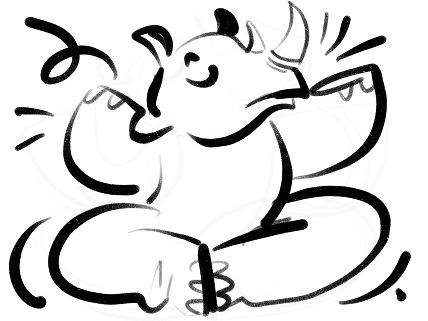
On the second brand level you want recognition—to belong to your herd; on the third—you’re ready to be rejected just to stay true inside yourself rather than buy anything at all. You no longer choose what to buy—you choose who to be when nothing can be bought anymore.
You follow brands because they give you a starting point—the one missing from father or school or your country because brands are the only ones that give you reason not to give up.
You no longer go to Patagonia for clothes. You join their cult because you’re afraid the Earth will burn—and dressing as if still able to save it helps soothe this inner beastly tension. You don’t go shopping at Fishing Gear store for a camping flask—you carefully pick water containers at Triple Aught Design because those who don’t rely on help drink solely from such bottles. You, stubborn like a rhino, ignore online pop-ups about courses just to read scientific articles in The Global Technology because you believe in strength through dissenting opinions. Trustworthiness, loyalty, faith!
In this third dimension—the brand ceases being just a sticker on your forehead—it evolves into your own tail—even if useless but vital for balance. In this dimension you’re not updating devices—you’re updating yourself because your brand promised enlightenment. Then you start storing boxes, quote founders, and crawl into mountains after that, shed everything sticky from yourself, and repeat mantras: “intuitive interface,” “ecosystem,” “magic of technology.”
Third-level brands are true shamans of capitalism—you come to them for the function but leave with a conviction.
Ritual of primal power
Crunch. A jaguar carefully steps over a fallen tree. Crunch. It doesn’t rely on GPS accuracy nor check maps nor conduct surveys. Crunch. It knows it must go exactly 17 degrees north from the anthill because water is there. Crunch. Crunch. Born graceful by nature—the jaguar boldly crosses all boundaries set by the jungle tribe councils. Crunch.
Humans need to buy such a right.
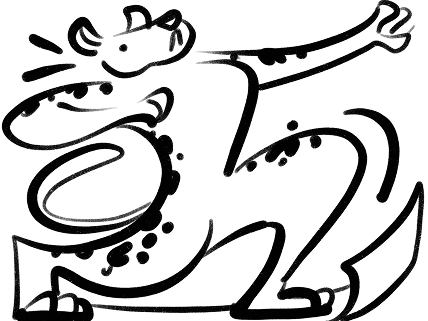
Humans will look bewildered at long lines of cars stretching kilometers, “Mercedes—how come? I bought your right not to bypass!” Humans will endlessly call managers at fitness clubs to account if after paying membership they won’t get visible abs under their T-shirts right away! Humans will slam trash bin lids after throwing away Balenciaga sneakers that never made them fashion gurus! Finally, humans will file numerous complaints with Rolex quality control because when they bought prestigious watches they also gained the ability to stop time which never activated.
Humans truly believe that buying grants them top privileges of wild nature. Crunch. But wild animals don’t issue authenticity certificates. Crunch.
Hunting identity. To survive
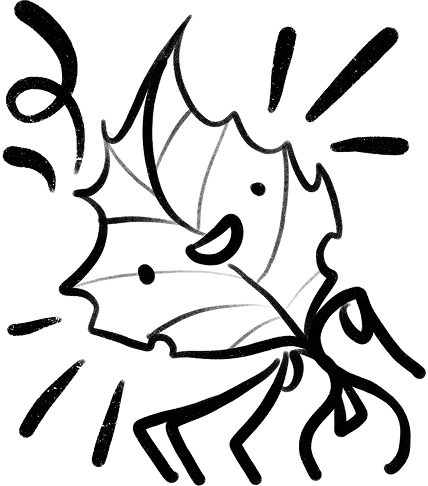
Enough! It’s time to escape from this animal trap. I refuse anymore clutching onto brands like branches just to not drown in my own insignificance. I won’t gather into herds just to silence my inner voice. I won’t prove anything anymore! All I need is faith that I can escape from here remaining human. And that’s the hardest part.
So who am I? A coffee stain on Schiller’s book? A short-sighted gap in my schedule? A taste of childhood? Fear of the school principal? A TV show I never watched? Who am I? A camera flash? A teddy bear? Music that made me cry? The first shirt I was king wearing?
I reach into my pocket made from swamp mud and find with burnt fingers a saving note: “You are a personality made up of tiny grains defining identity.”
Sounds like an advertising slogan from some self-development course…
The last dimension of a brand—the identity
Here brands stop being things—they become organs. In the identity dimension nothing needs buying because everything here already belongs to you. It’s beautiful isn’t it? But it’s another mirage—a visual illusion.
In this final dimension, brands give you a high-quality illusion that you’re real. Is anyone capable of choosing your childhood taste? Is anyone capable of choosing for you that very fabric that speaks for itself? Is anyone capable of choosing for you to care about the environment? Is anyone capable of choosing for you the shade of last summer’s longing? Is anyone capable of choosing for you the sound of silence in your headphones? Nobody can. And brands know that.
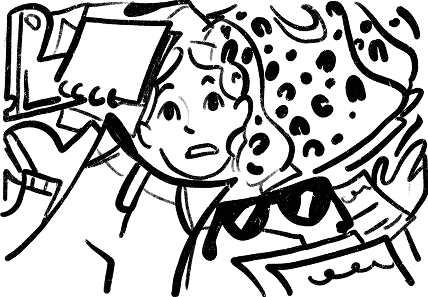
And here you are, real, running to LG to hear the new Spotify updates. At this moment, you don’t care what has appeared on the Swedish streaming service; you need Spotify. You no longer put on sneakers; you put on Nikes. Standing at the checkout, you consider buying a Kinder Surprise with your change. You rush to IKEA to buy curtains on sale. And if you still feel like yourself in this chaos, it means brands have succeeded in their task.
You created this chaos yourself, from which you’re trying to escape; brands just showed you the shortest way back to yourself.
One day, you’ll wake up with the thought, “I am my belongings,” and then realize that belongings are not you. And then a new brand will come along and offer to fill the emptiness. The circle will close. Like in the jungle: parasitic plants don’t kill their host; they make it their home.
P.S. Want an antidote? Burn your wallet. Or your conscience. Or this article.
The final ritual: Escape from the skin
Night has fallen over the jungle. In the distance, you can hear a howling coyote, adapted to the changing consumption environment.
Monkey Cebus plasticus skillfully picked a plastic bag from a branch and put it on its head, claiming a social sign. In the treetops, Psittacus shouticus parrot signaled the start of seasonal sales: “Limited edition!”.
Lazy sloth Bradypus socialis slowly scrolled a viral video on a tiny device. Flamingo Phoenicopterus mindfulness gracefully lifted its leg, demonstrating new mindfulness techniques—a key trend for survival in a chaotic brand world. Anteater Myrmecophaga influencerus launched an outreach ad for communication training. The lion king wiped an old iPad with its massive paw and silently tapped “Add to cart.”
Don’t try to understand. Just breathe. You are—a brand, baby.
The Einstein-Rosen bridge? We’re building it out of facts.
Thank you!


